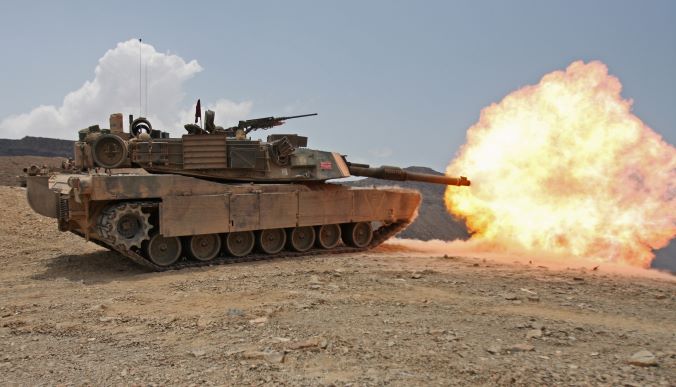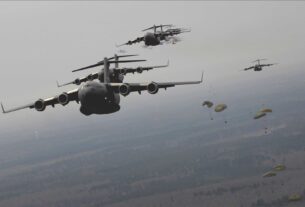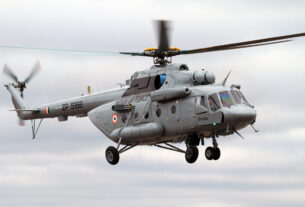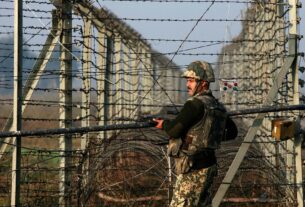Challenges in tank warfare in mountains
The new challenge that India faces in tank warfare is deployment of these heavy platforms in the mountainous terrain north of the Himalayas on the Tibetan plateau. About a hundred T-72 main battle tanks have been deployed in the Uttar Pradesh segment of the Line of Actual Control to be able to gain experience of dealing with the peculiarities of high altitude rarefied atmosphere and the extreme cold simultaneously. India used six tanks to stop the Pakistani advance into the Ladakh sector in 1948 but since then there was no coherent effort to establish a permanent presence for mechanized forces in the lunar landscape that lies on the Tibetan plateau.
There is much that has to be learned and understood in the context of the politico-military objectives of such a deployment. There is no room to redesign strategies and tactics once hostilities begin as happened in Kargil in 1999. In Kargil, in spite of being deployed in mountainous terrain since 1948 and the stark lesson in airpower employment in Afghanistan, the Indian Armed Forces were found groping to manage a battlefield dominated by the shoulder-fired surface-to-air missiles in the possession of the Pakistani troops entrenched in sangars overlooking Indian territory. India lost an aircraft and a helicopter before it changed tactics and the war dragged on for more than two months. No such luxury exists now in confrontation with China in the Himalayas.
Far from the laissez faire of the “we leave it to the armed forces to decide” the government must make it clear what are the bare minimum requirements of such a deployment before leaving it to the Armed forces to deliver in the most cost effective manner possible. The minimum political-military requirement in the western sector around Ladakh is to stop the Chinese juggernaut from breaking through into UP and Himachal Pradesh and, if possible, pushing it back beyond the Indian claim line as designated by Jawaharlal Nehru in 1958. A crucial requirement is the defence of the Pangong Lake, half of which is in possession of the Chinese, and prevent any breakthrough into Shyok and Leh that lie to the west of it. Whether this can be done with tanks would require tracks capable of being used by tanks. This vital sector will have to be defended either by air or long range artillery that will prevent a Chinese concentration and forward thrust.
High altitude deployment
The tanks that have already been deployed are in what is known as the “Sugar Sector” or the central sector of the confrontation with China. It lies between Demchok in the Ladakh district and the western Nepal border-a salient about 400 km wide. The defence of this salient will have to be conducted by a combination of static (dug in) emplacement, a forward patrol group backed by air cover and an extended kill zone that will engage the Chinese in depth with artillery or missile fire. Stopping the Chinese would be the primary objective.
The Chinese have developed and deployed a light tank with a 105 mm gun that is made for high altitude area operations. The powerful diesel engines have been designed to operate in the rarefied air conditions on the Tibetan plateau. Gun-to-gun the 125 mm smoothbore gun on the Indian T-72 tanks deployed in Ladakh are far superior to the 105 mm guns on the Chinese new tank. Both can fire missiles with a range of 5000 meters through the gun barrel. However, the new tanks are also supplemented within the People’s Liberation Army battle order with the older generation tanks derived from ex-Soviet designs with higher caliber gun barrels. In 2011 China conducted a live exercise to capture passes as high as 5000 meters using mechanized forces and airborne troops. The exercise included a test of the logistics network in support of such strikes especially the use of the Qinghai-Tibet Railway for logistical support.
One thing is clear that China is fully prepared to launch a multi-pronged attack across the ephemeral Line of Actual Control and there is now little excuse for the Indian Armed Forces not to be prepared for the attack. While the stationing of tanks in the Ladakh sector is heartening, the more crucial sector abutting Sikkim and Arunachal Pradesh is terrain that does not allow for tank warfare.
The acquisition of the US-made M777 ultralight howitzers has been set in motion and refurbished Bofors and improved Pinaka multibarrel rocket launchers are being deployed in the eastern sector. It is very possible that China will not wait for the Indian Army to deploy the US-made howitzers going by the activities at Dhoka La at the tri-junction of the Sikkim, Bhutan, Tibetan borders. It has stopped the passage of pilgrims to Mansarovar and demolished an Indian bunker in retaliation to Indian objections to the construction of a road up to the Chinese outpost in the locality. The landscape in the area represents a dagger aimed at the heart of India. Troubled Darjeeling is less than 100 km from the spot where Indian and Chinese troops were engaged in a physical scuffle over the Indian bunkers in the area. It lies at the very tip of the dagger-shaped Chumbi Valley that separates Sikkim from Bhutan.
Preparedness
India is now much better prepared than it was in 1962 when the Chinese made a deep incursion into Arunachal Pradesh which was then known as the North East Frontier Agency. China has revised its claims in the region from the Tawang tract to the whole of the State being a part of “South Tibet”.
Given the state of affairs India will have to accelerate the pace of raising of a new Mountain Strike Corps to handle the defence of Arunachal Pradesh. A predetermined “kill zone” will have to be established so that there can be an immediate retaliation at any Chinese attempts to repeat the kind of deep penetration that it achieved in 1962. There will have to be no hesitation, in fact it should be immediate aerial intervention to chop off the lines of Chinese logistics. The IAF has already stationed aircraft in the forward areas and hopefully there is synergy between it and the land forces unlike as in Kargil.
It is expected that six armoured regiments and two mechanised infantry battalions are to be positioned at appropriate positions along the Line of Actual Control with the still-being-raised Mountain Strike Corps providing the infantry component.
It has been suggested that the stationing of tanks in the Himalayas is intended to be a permanent feature adequate infrastructure like approach roads and arterial linkages along with concretised silos for dug in tank emplacements must be provided. Ammunition dumps can be carved out of cliff sides. Equally importantly efforts should be made to gauge the performance of the equipment under the harsh conditions obtaining in that area.
The lay of the land suggests that there are segments where promontories on either side of navigable valleys would need to be sanitized with either direct fire, high elevation weapons or organic air elements for air superiority appears to be an absolute necessity. Instead of venturing deep into the lunar landscape it would be more appropriate tactically to allow the Chinese armour to approach India’s dug in positions before engaging them with direct tank fire, Helina missiles and the Indian Air Force.
Preventing China to make any significant penetration across the Line of Actual Control will be a devastating defeat for an expansionist and assertive China. Every manoeuvre must be executed to ensure that result.




